Steam-powered wartime Britain revisited
Posted by Chris Graham on 21st May 2024
It was back to wartime Britain for a memorable day at Richard Parrott’s Fengate Farm, in Norfolk, as Simon Colbeck reports.
All photographs: Simon Colbeck
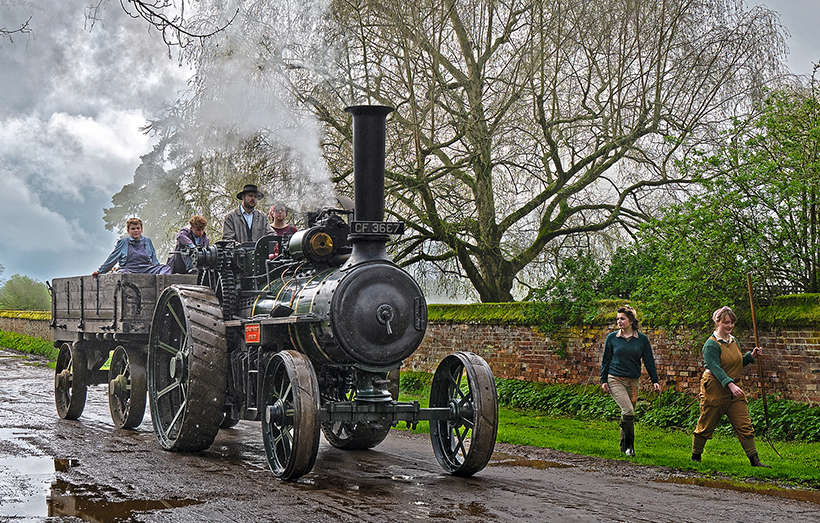
Wartime Britain: Just after a heavy down poor Burrell No. 748 of 1877 Century heads out from the farmyard.
With a supporting cast of Land Army girls and squaddies the fields around Fengate Farm in Norfolk were transported back to the 1940s for a day of photography trying to capture the essence of farming with steam during the darkest days of the Second World War. Richard Parrott’s superb collection of Burrell traction engines along with a of pair of BB1 ploughing engines provided the steam interest for the day.
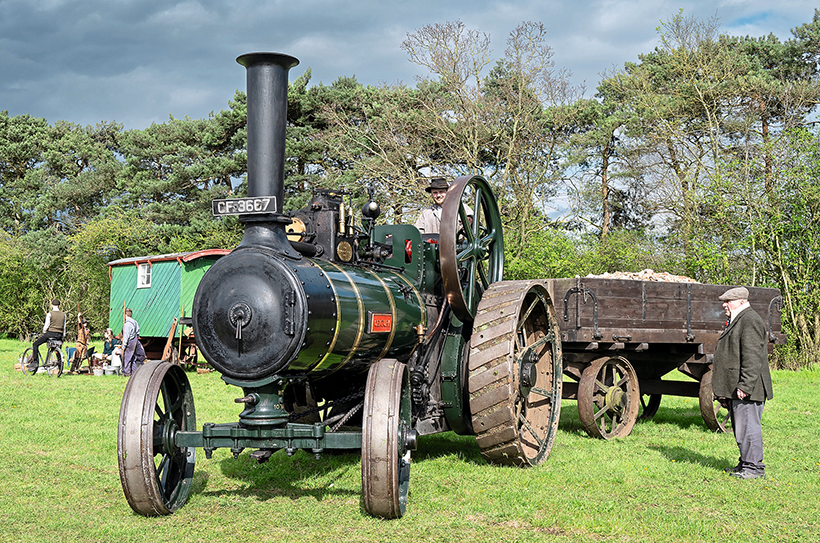
It’s lunchtime outside the living van as Burrell No. 748 of 1877 Century takes a load of hardcore away in the traction trailer.
The Women’s Land Army (WLA) were an important part of boosting Britain’s food production during the Second World War. Before the war, Britain had imported much of its food but when the war broke out, it was necessary to grow more food at home and increase the amount of land in cultivation. With many male agricultural workers joining the armed forces, women were needed to provide a new rural workforce.
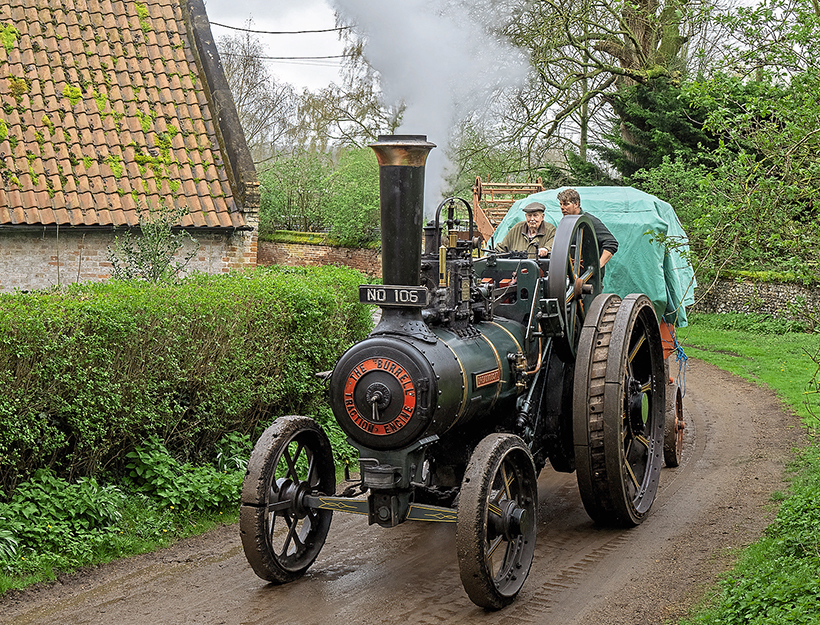
Richard Parrott is at the controls of Burrell single No. 2948 of 1907 Dreadnought with a threshing machine and elevator in tow.
The WLA had originally been set up in 1917 but disbanded at the end of the First World War. It reformed in June 1939 just prior to the outbreak of the European war. Women were initially asked to volunteer to serve in the Land Army and, from December 1941, could also be conscripted into land work. At its peak in 1944, there were more than 80,000 women – often known as ‘land girls’ – in the WLA. The land girls did a wide variety of jobs on the land. They worked in all weathers and conditions and could be directed to work anywhere in the country. Many land girls lived in at the farms where they worked.

Burrell single No. 2948 of 1907 Dreadnought and Burrell No. 3717 of 1903 Spitfire rest in the field under a menacing sky.
However, in rural areas, living conditions could be very basic and the lifestyle lonely. As larger numbers of women were recruited, hostels were set up to house land girls and by 1944, there were 22,000 land girls living in 700 hostels. The land girls were paid directly by the farmers who employed them. The minimum wage was 28 shillings per week and from this, 14 shillings was deducted for board and lodging. At the time the average wage for male agricultural workers was 38s per week.
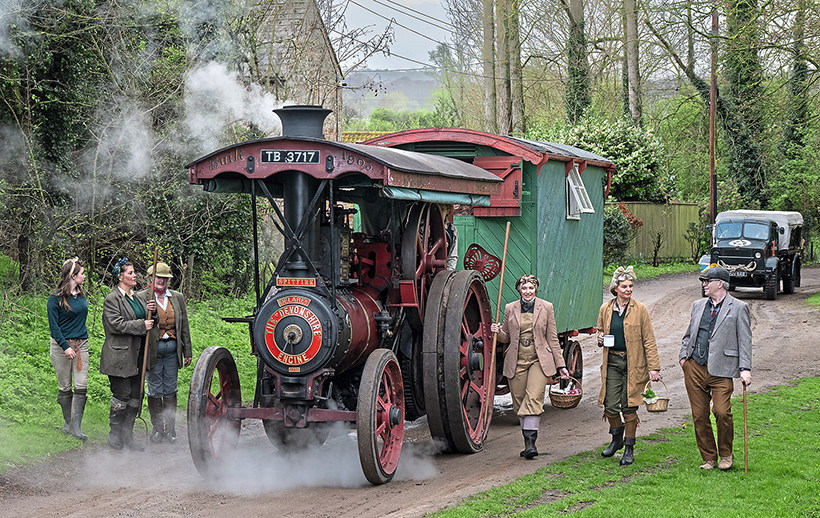
Burrell No. 3717 of 1903 Spitfire is flanked by members of the Women’s Land Army as it climbs up from Fengate Farm. A 1942 Bedford tanker is stuck behind the engine and living van.
During a basic working week, the land girls worked 48 hours in winter and 50 in summer. Initially there were no holidays, paid or unpaid, just a free travel pass after six months. However, conditions improved after 1943 with the introduction of the ‘Land Girls Charter’. This introduced one week’s holiday per year and raised the minimum wage.
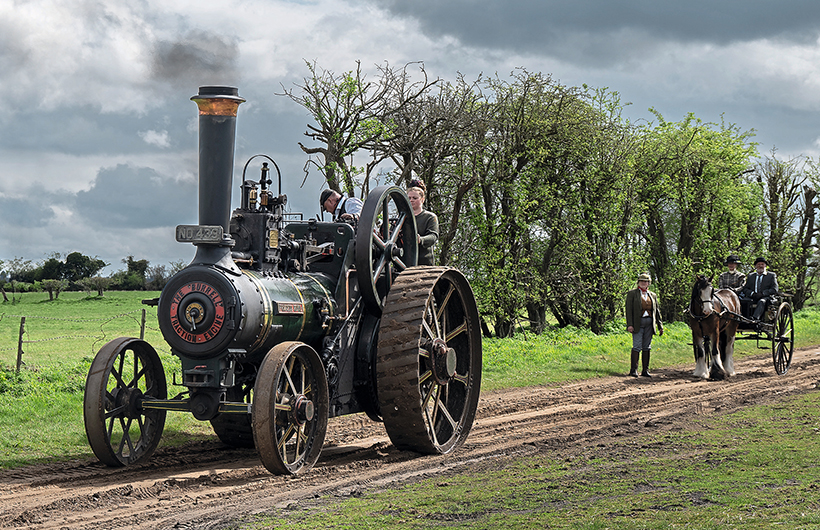
Burrell No. 3106 of 1909 Princess Royal with a pony and trap for company out in the fields.
The WLA had a specialist forestry branch called the Timber Corps. This was established in 1942 to help source and prepare wood which was needed urgently for pit props and telegraph poles. The work carried out by women in the Timber Corps, known as ‘Lumber Jills’, included selecting and measuring trees suitable for felling, sawing and lifting timber and burning brushwood. Around 6,000 women worked in the Timber Corps.
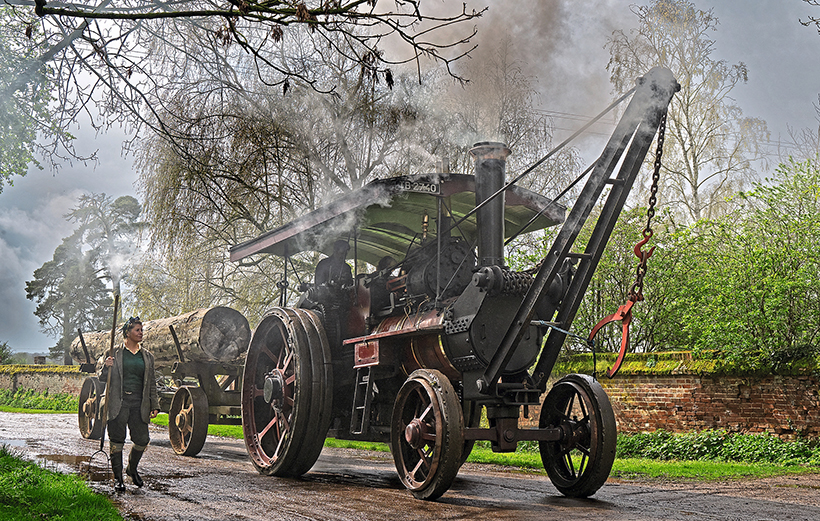
Burrell crane engine No. 3695 of 1915 Lord Derby catches the sun after an April shower as it hauls the timber trailer through the lanes.
Burrell crane engine No. 3695 of 1915 Lord Derby with a pair of Lumber Jills on the footplate lifting tree trunks onto a timber trailer perfectly recreated the important work that this little-known part of the WLA performed during World War Two.
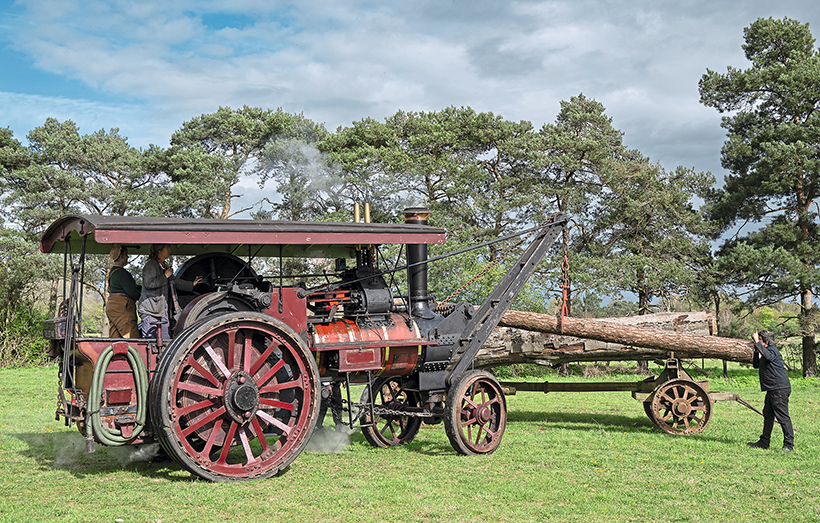
Recreating the days of the Lumber Jills of World War Two, Burrell crane engine No. 3695 of 1915 Lord Derby lifts a log into position on the timber trailer.
Being situated on the border of Norfolk and Suffolk and only a stone’s throw from the spiritual home of Charles Burrell & Sons at Thetford, Fengate Farm has always been a paradise for fans of all things Burrell.
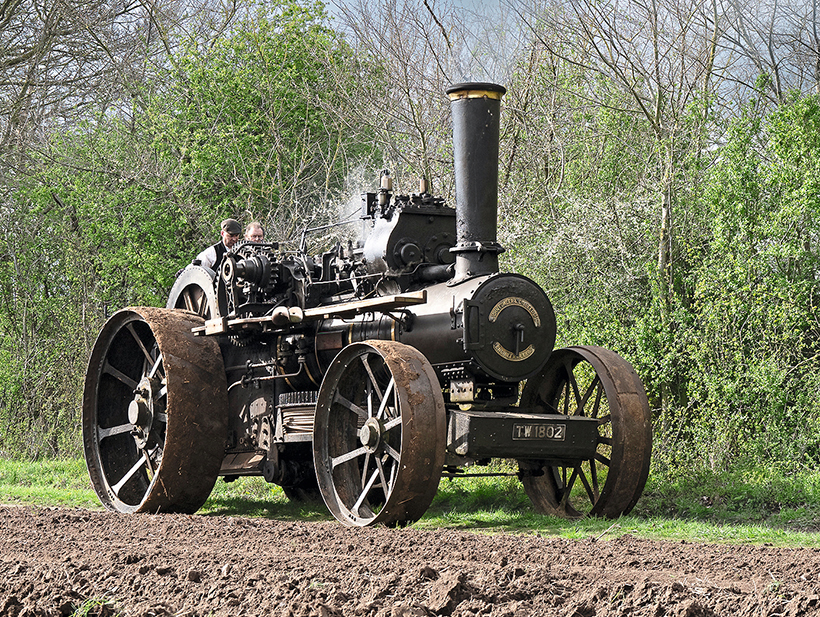
Returning along the field margin after a day’s ploughing, Fowler BB1 ploughing engine No. 15454 of 1925 Bonzor Tom heads for home.
One of the star performers for the 1940s day was Burrell No. 748 of 1877 Century. The oldest surviving Burrell in the UK and one of the oldest operating traction engines in the world today, Century looked a treat hauling a traction trailer along the country lanes near Weeting.
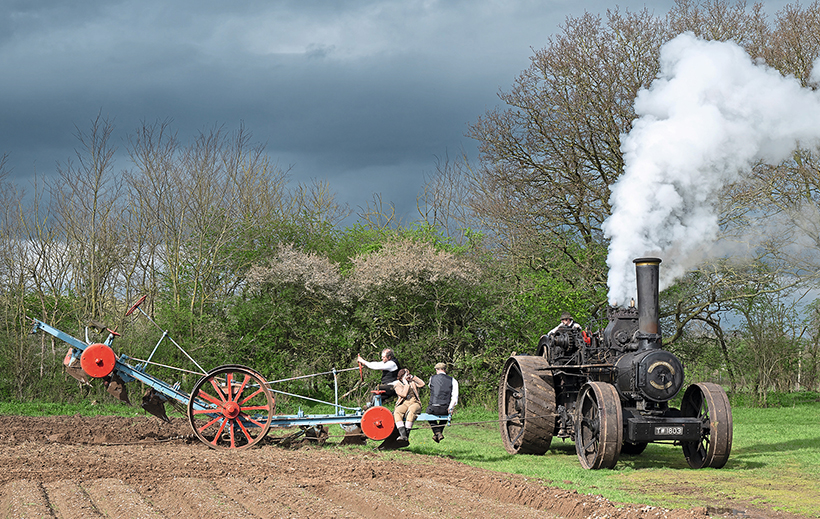
Whistling the start of another pull across the field, Fowler BB1 ploughing engine No.s 15453 of 1925 Saucy Sue fills the dark sky with white steam from its whistle.
Also seen in the lanes leading away from Fengate farm was Burrell traction engine No. 2948 of 1907 Dreadnought hauling a threshing and Elevator set. This lovely 8hp single-cylinder engine had Mr Parrott himself at the controls as it worked up to the open fields.
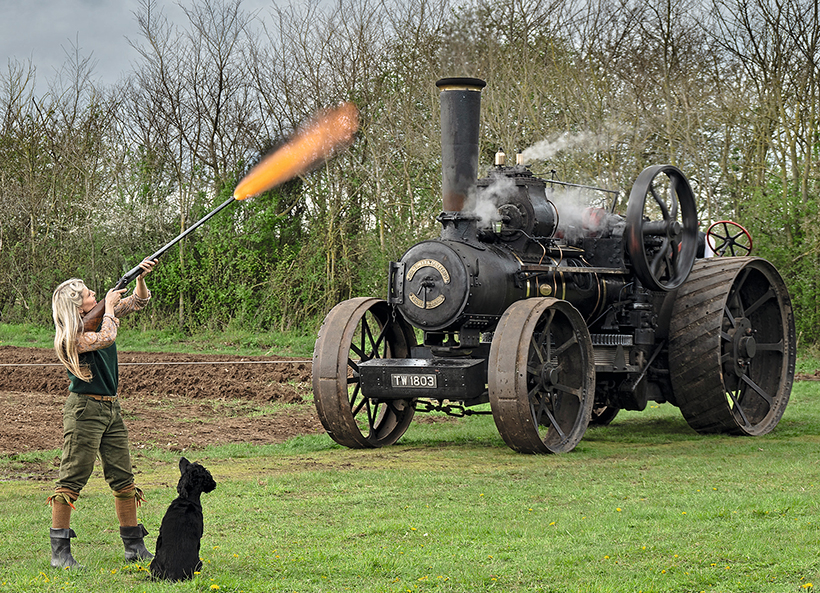
One of the land girls fires a shot gun next to Fowler BB1 ploughing engine No. 15453 of 1925 Saucy Sue.
There was an air of Dad’s Army about the sight of Burrell No. 3717 of 1903 Spitfire hauling a living van through the lanes escorted by land girls. The whole ensemble was being closely followed by a 1942 Bedford fuel tanker in US military markings, wonderful!
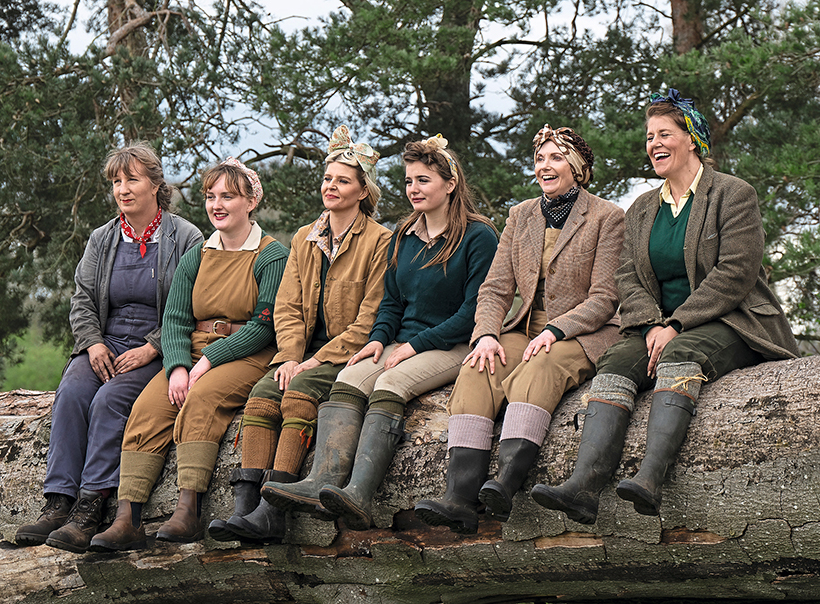
Recreating the Women’s Land Army of WW2 at Weeting.
Under dramatic storm-laden skies, Weeting’s resident Fowler BB1s Nos. 15453 and 15454 of 1925 were engaged ploughing the field. Known as Saucy Sue and Bonzor Tom, the pair performed well on the long drag with the Fowler three-furrow anti-balance plough.
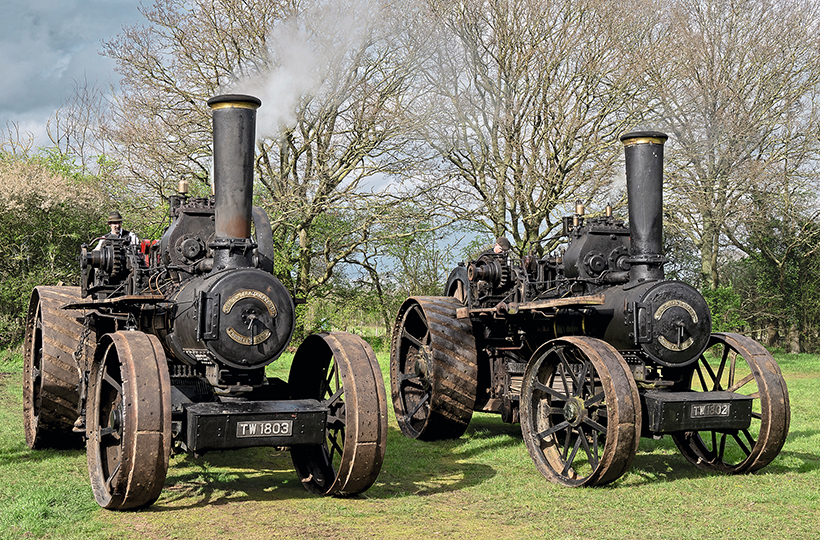
Fowler BB1 ploughing engines Nos. 15453 and 15454 of 1925 rest together after a day in the field.
At the end of a most successful day all the engines and 20+ re-nactors made their way back to the engine sheds in a long convoy with trails of steam drifting across the flat East Anglian landscape in an almost timeless scene.

Burrell No. 3106 of 1909 Princess Royal has steam to spare as it heads off around the country lanes near Weeting.
A fitting end to a very enjoyable day organised by Timeline Events and Richard Parrott’s team at Fengate Farm.
With thanks to Timeline Events and Neil Cave.
This feature comes from the latest issue of Old Glory, and you can get a money-saving subscription to this magazine simply by clicking HERE
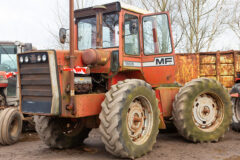
Previous Post
Record-breaking Massey Ferguson tractor prices
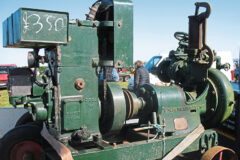
Next Post
The Cotswold Oil Engine & Preservation Society’s sale



